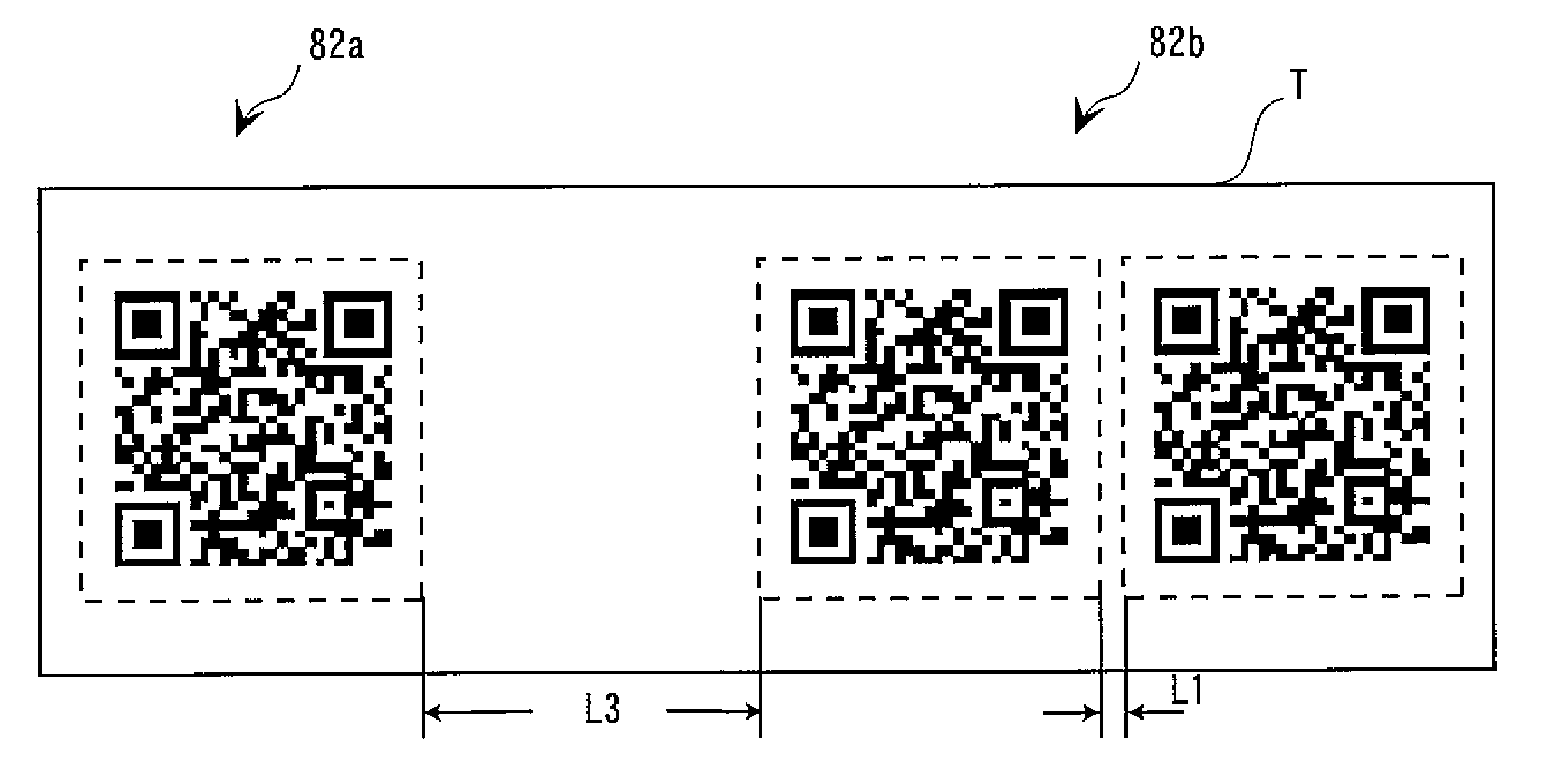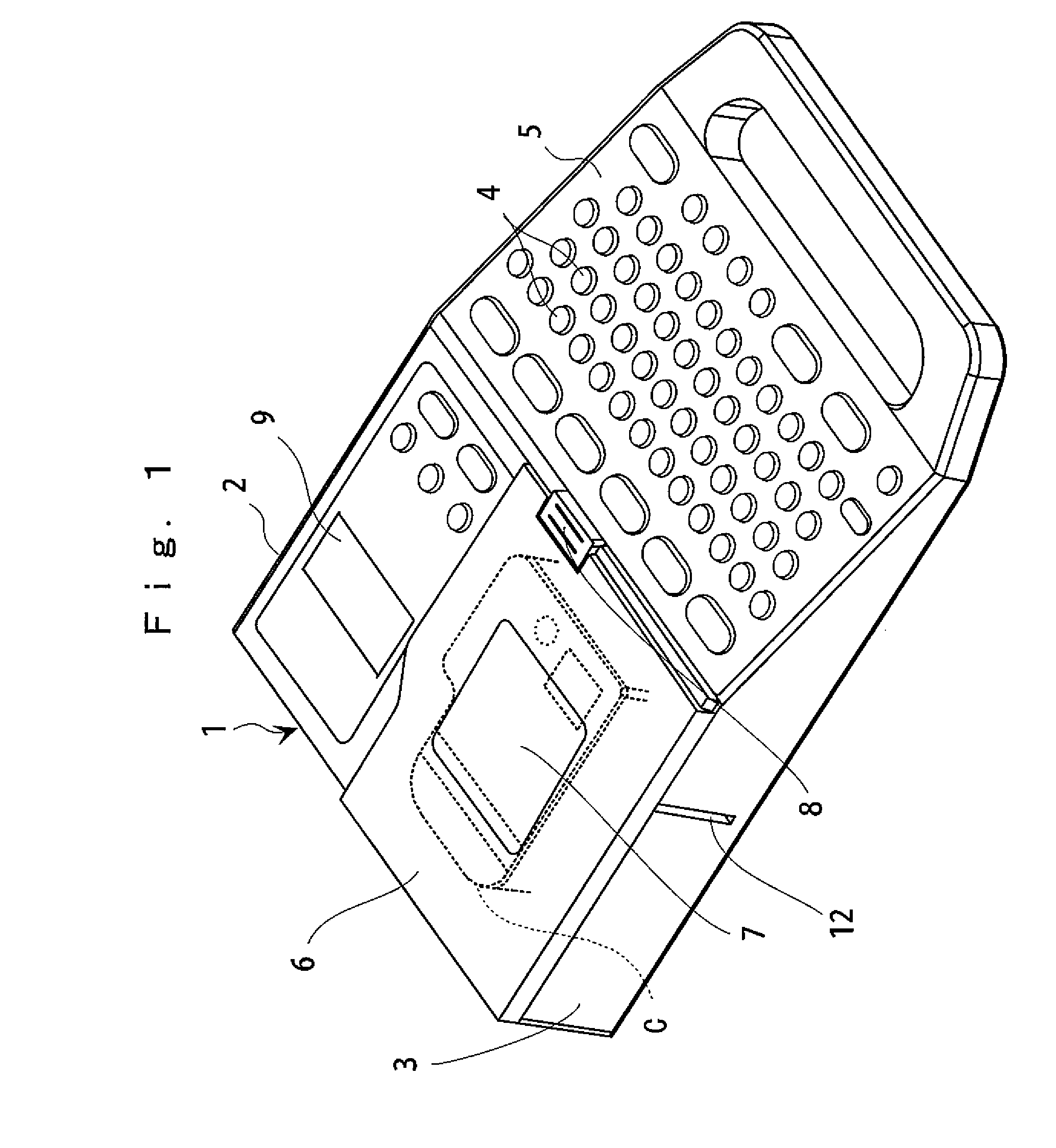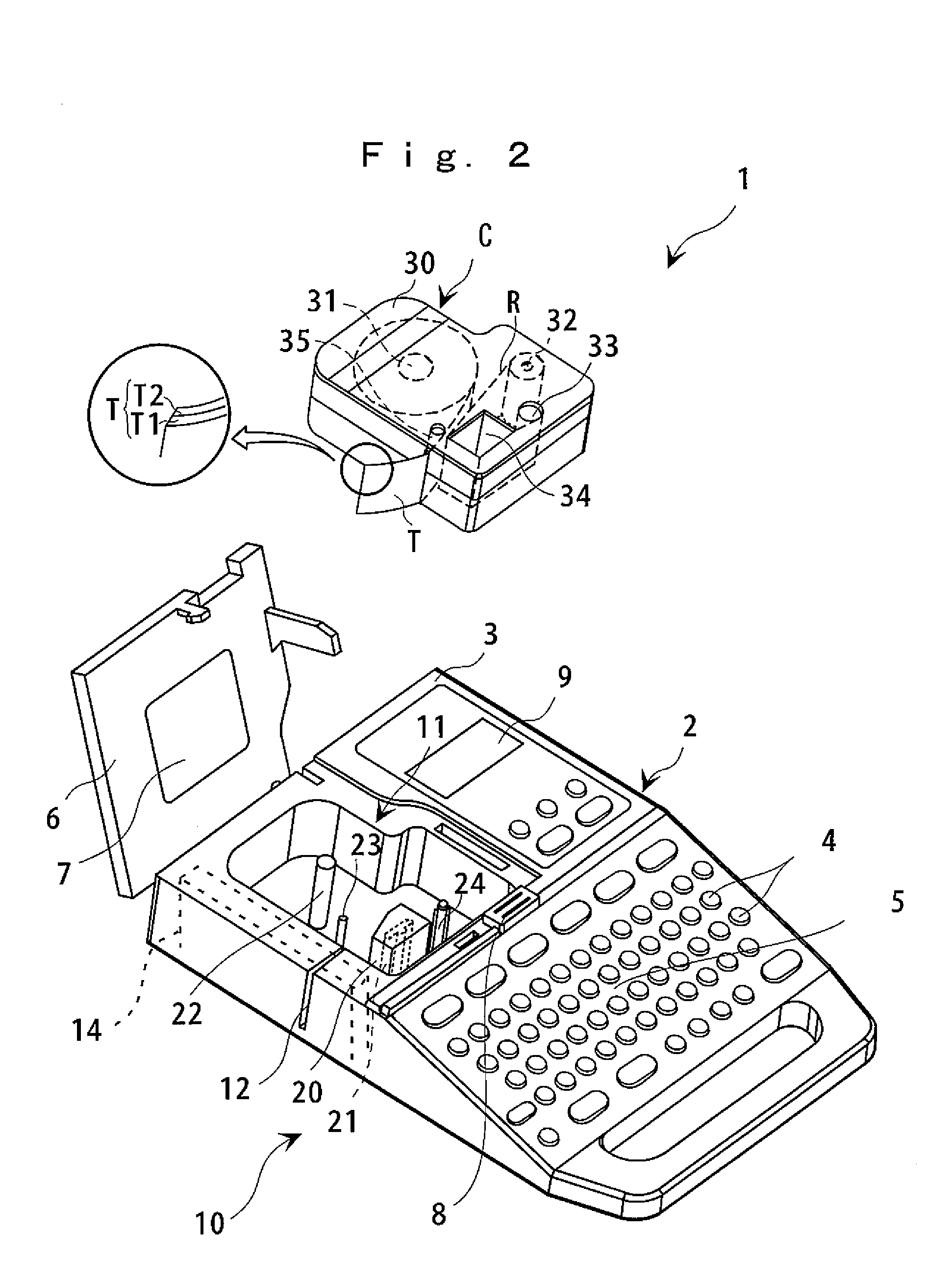Printing Apparatus and Printing Method
a printing apparatus and printing method technology, applied in the direction of digital output to print units, instruments, sensing by electromagnetic radiation, etc., can solve the problems of cumbersome reading of such objects, burdensome operations, and difficult to specify reading objects, so as to facilitate the reading operation and the reading operation. , the effect of easy reading
- Summary
- Abstract
- Description
- Claims
- Application Information
AI Technical Summary
Benefits of technology
Problems solved by technology
Method used
Image
Examples
second embodiment
[0082]Next, a description will be made about the tape printer 1 with reference to FIGS. 10A to 14B. Note that only different parts will be described herein so as to avoid overlaps. In lieu of the interval setting function described above, the tape printer 1 has a code image rotating function (code image rotating device) composed of a rotation angle setting program for setting rotation angles of created QR-code images and a rotation executing program for rotating the QR-code images based on the rotation angles set by the rotation angle setting program. Also, the RAM of the tape printer 1 has provided therein a rotation angle storing area for storing the rotation angles 83 set by the rotation angle setting program. Hereinafter, a user's operating procedure for controlling the code image rotating function and the rotation angle storing area will be described with reference to FIGS. 10A to 10D and 11A to 11C.
first embodiment
[0083]When any one of the alternatives “TWO-WAY DIVISION,”“THREE-WAY DIVISION,” and “FOUR-WAY DIVISION” is selected in the division setting menu 103 as in the first embodiment, the screen transits to a rotation angle setting menu 104 in which respective rotation angles 83 for the plurality of divided OR-code images 82b are set.
[0084]Selectively displayed in the rotation angle setting menu 104 are alternatives “AUTOMATIC,”“NO ROTATION,”“90°,”“180°,” and “270°.” The rotation angle setting menu 104 is sequentially displayed by the number of divisions selected in the division setting menu 103. In other words, when the alternative “TWO-WAY DIVISION” is selected in the division setting menu 103, a first rotation angle setting menu 104a for rotating one divided QR-code image 82b is displayed (see FIG. 10B). After any one of the alternatives is selected from the rotation angle setting menu 104, a second rotation angle setting menu 104b for rotating the other divided QR-code image 82b is dis...
PUM
 Login to View More
Login to View More Abstract
Description
Claims
Application Information
 Login to View More
Login to View More - R&D
- Intellectual Property
- Life Sciences
- Materials
- Tech Scout
- Unparalleled Data Quality
- Higher Quality Content
- 60% Fewer Hallucinations
Browse by: Latest US Patents, China's latest patents, Technical Efficacy Thesaurus, Application Domain, Technology Topic, Popular Technical Reports.
© 2025 PatSnap. All rights reserved.Legal|Privacy policy|Modern Slavery Act Transparency Statement|Sitemap|About US| Contact US: help@patsnap.com



